Juno meets Jupiter: 7 things to know about Nasa's epic mission
Sign up now: Get ST's newsletters delivered to your inbox
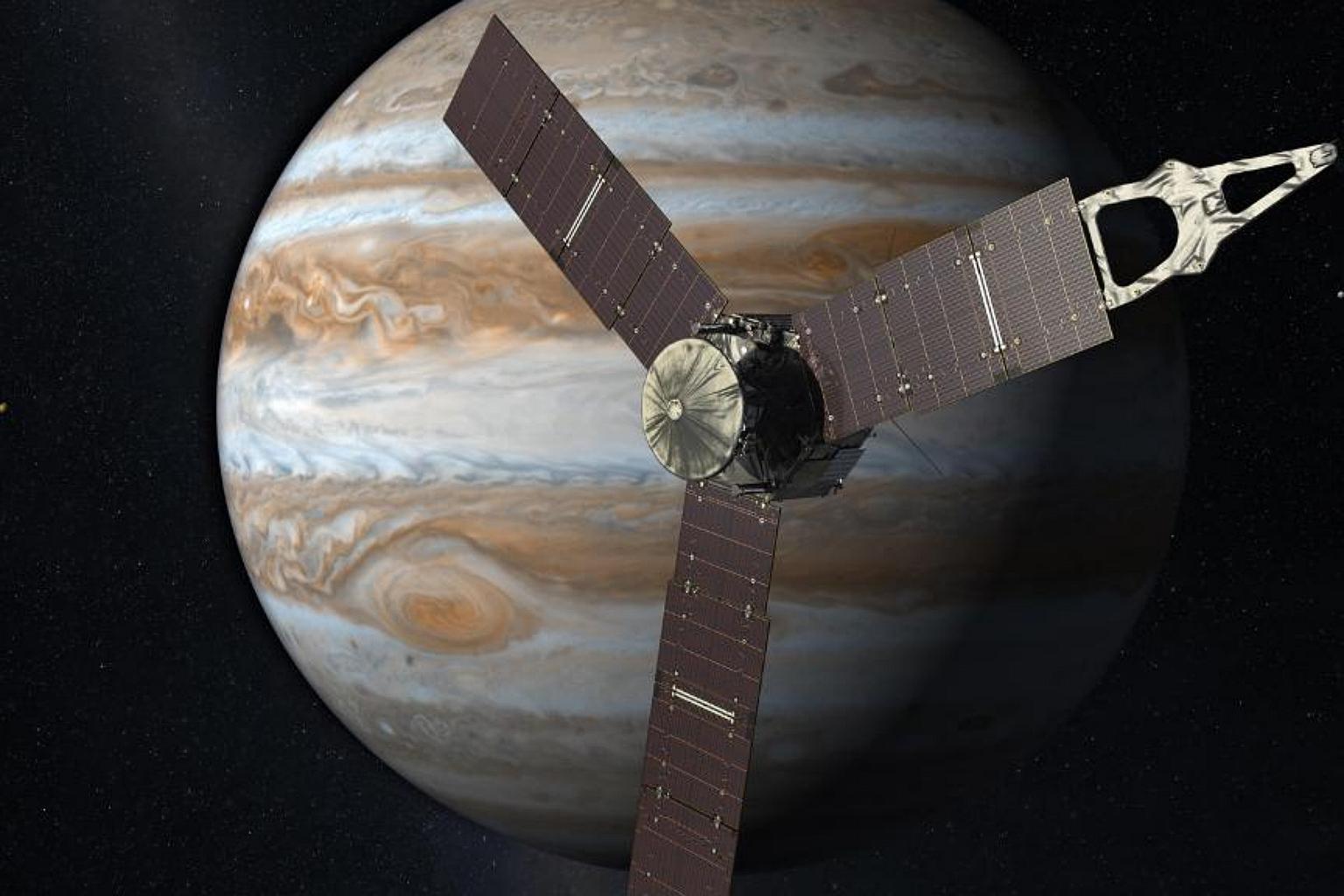
An artist's rendering of Juno with Jupiter in the background.
PHOTO: @NASA/TWITTER
Follow topic:
Nasa's Juno spacecraft on 9.55 pm Monday (9.55am Tuesday Singapore time) flew over a massive storm raging on Jupiter.
It passed over Jupiter's mysterious Great Red Spot, "probably the best-known feature of Jupiter", principal investigator of Juno from the Southwest Research Institute in San Antonio Scott Bolton said.
The storm looks like a churning red knot on the planet's surface and has been monitored since 1830.
Juno earlier this month marked its first year in orbit of the gas giant. It had successfully entered Jupiter's orbit late on Monday (July 4, US time), capping a five-year, 2.7 billion km voyage.
Described as the hardest mission Nasa has ever completed, the US$1.1 billion (S$1.48 billion) project has been heralded as the key to understanding more about the solar system's biggest planet, and Earth's humble beginnings.
Here's what you need to know about Juno and its mission.
1. Why Juno?

The spacecraft was named after the ancient goddess Juno - who was both sister and wife to Jupiter, the god of the sky - in ancient Greco-Roman mythology
Juno also stands for the Nasa backronym, JUpiter Near-polar Orbiter.
2. It has been an epic journey
First launched on Aug 5, 2011, from the Cape Canaveral Air Force Station in Florida, it took Juno close to five years to traverse 2.7 billion km through space to reach Jupiter.
The spacecraft was travelling at a speed of about 209,200 km per hour when it fired its engines to slow down enough to be captured into the planet's orbit. It is the fastest spacecraft ever to enter orbit around a planet.
3. Not the first spacecraft to orbit Jupiter
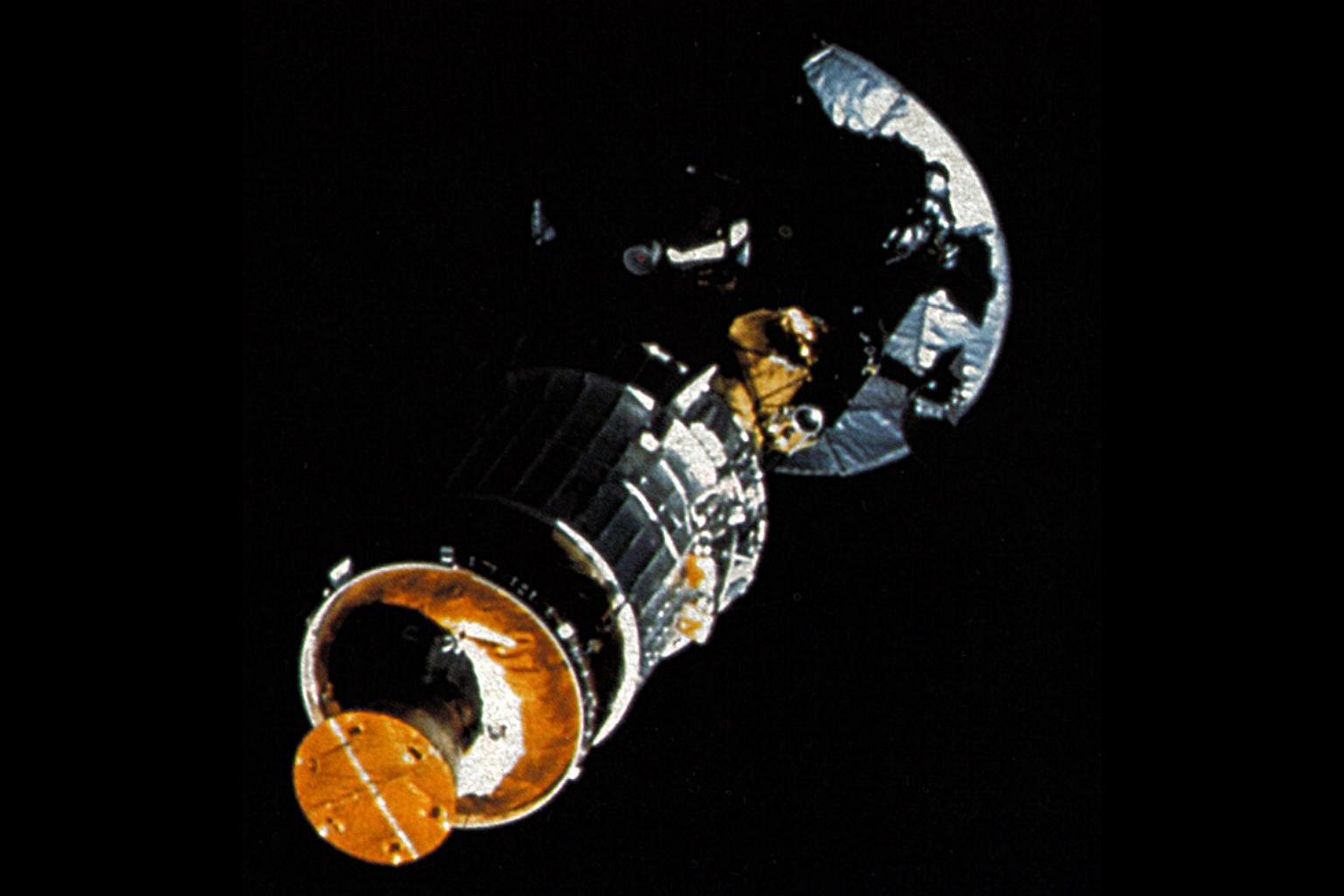
The honour goes to the unmanned probe Galileo, named after the famous astronomer Galileo Galilei.
Launched in October 1989, Galileo survived 14 years in space, eight of them in the Jovian system where it completed 35 orbits around Jupiter, and provided a wealth of information on the planet and its four primary moons - Callisto, Europa, Ganymede and Io.
4. Juno is a "manned" mission

No humans are on board, but it carries three white, 4cm-tall Lego figurines in the likeness of Galileo Galilei, the god Jupiter and his wife Juno.
Their presence, according to Nasa, is part of a joint outreach and educational programme with the Lego group, aimed at inspiring children to explore science, technology, engineering and mathematics.
5. An armoured windmill the size of a basketball court
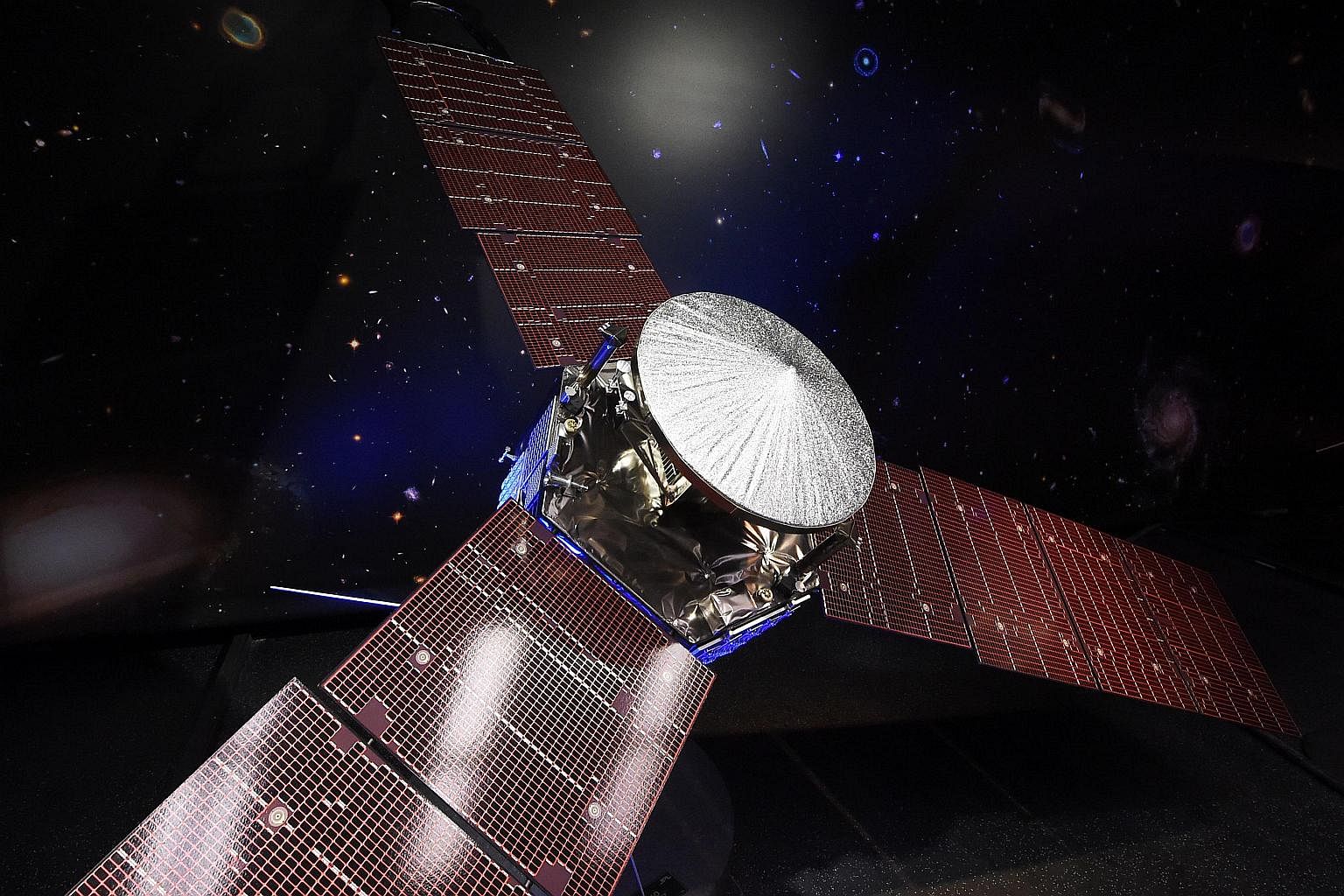
Juno's standout feature are its three 9m-long, 2.7m-wide solar array wings - the largest ever mounted on a planetary probe - capable of generating up to 14 kilowatts of power on Earth. That is enough to power an average residential home in the United States for more than a year.
With Jupiter much further away from the sun, the 18,698 solar cells on its arrays are expected to generate a modest 500 watts to power Juno's nine instruments.
Weighing over 3,600kg at launch, the centre of the spacecraft contains its vital electronic components, which are shielded from radiation (as high as 100 million X-rays a year) by 1cm-thick titanium walls.
6. Unlocking Jupiter's secrets
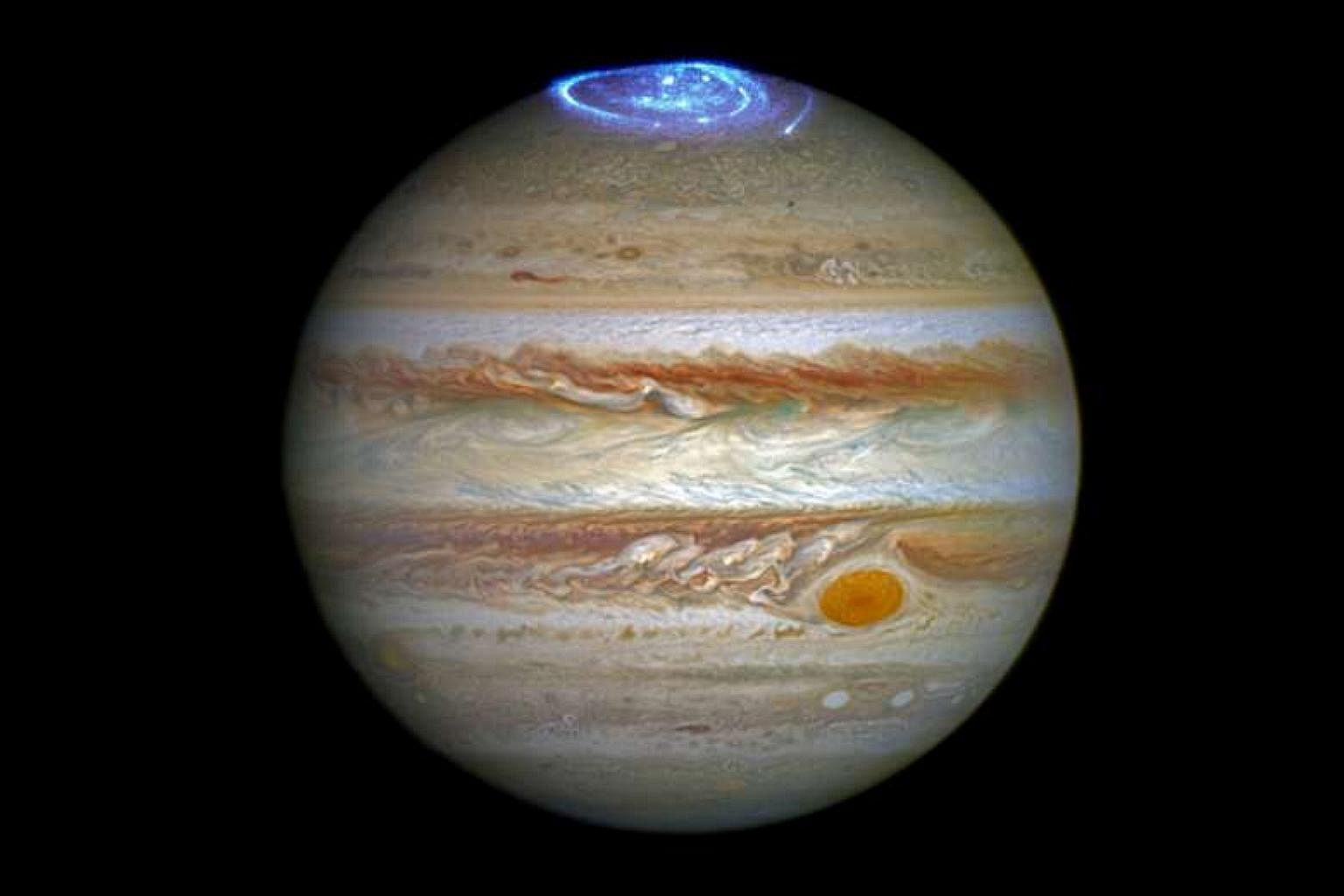
How much water does the fifth planet from the Sun hold? Does it have a solid core? Why are the auroras at its polar regions the brightest in the solar system? Juno's primary mission will be to delve into what lies beneath the planet's cloud-soaked atmosphere.
To that end, Juno is expected to come within 5,000km of Jupiter's cloud top - closer than Galileo - to map its gravity and magnetic fields. Scientists are also hoping to find out more about its Great Red Spot, which Nasa says has been shrinking in recent years.
7. How long can Juno last?
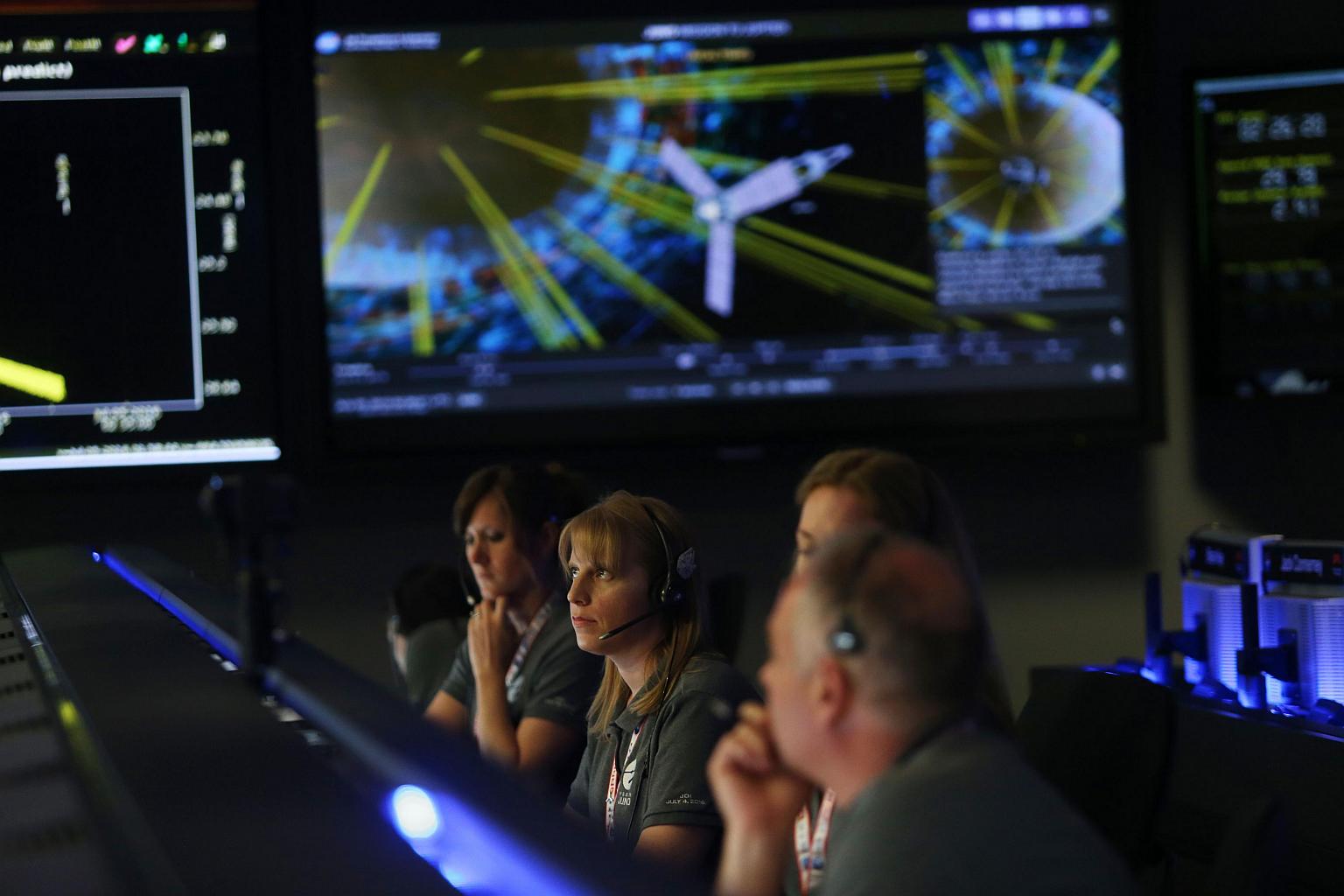
If all goes well, it is expected to make 37 trips in 20 months around the giant planet, which has a diameter over 11 times the size of Earth's.
It is also installed with a JunoCam, a citizen science camera that allows amateur astronomers to decide which of Jupiter's swirling storm clouds should be photographed.
Juno will end its mission in 2018 by making a deliberate death plunge into Jupiter's atmosphere, where it will disintegrate so as to avoid damaging any of the potentially habitable moons surrounding the planet.

